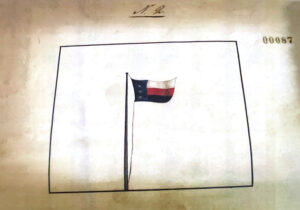Most everyone is familiar with the slogan “Six Flags Over Texas,” especially since it is the name of a big theme park in Arlington, Texas. The slogan signifies that the flags of six different nations have flown over Texas: the flags of Spain, Mexico, France, Texas, the Confederacy, and the United States.
Less well-known is that seven flags have flown over my hometown of Laredo, Texas, which is located on the U.S.-Mexico border. The seventh nation was the Republic of the Rio Grande, whose capital was Laredo.
Under Mexico’s constitution of 1824, Mexico’s governmental system was based on a limited-government republic at the national level, with political power being decentralized to the Mexican states and provinces. That system ended with the presidential election in 1833 of Gen. Antonio López de Santa Anna, who abrogated the constitution and implemented a highly centralized federal government (much like what happened in the United States.)
People in the northern part of the country opposed the change and viewed it as an assault on their freedom and independence. On November 7, 1835, the Mexican province of Texas issued a declaration in favor of the Mexican Constitution of 1824, which Santa Anna had abrogated. However, on March 2, 1836, at the Convention of 1836 at Washington on the Brazos, Texas declared its full independence from Mexico, thereby declaring itself an independent nation.
On March 6, 1836, Santa Anna’s forces defeated the revolutionaries defending the Alamo in San Antonio, Texas. The following month, however, Sam Houston’s forces defeated Santa Anna’s army at San Jacinto and secured his surrender. Santa Anna was permitted to return to Mexico, where he resumed his position as president.
Resistance to Santa Anna’s tyrannical rule did not end, however, with his defeat at the hands of the Texans.
The southern boundary of the new nation of Texas was generally recognized as the Nueces River, which was located many miles north of the Rio Grande. Laredo was located on the northern side of the Rio Grande, which was still considered to be part of Mexico, not Texas. In January 1839, a convention was held at the office of the Justice of the Peace in Laredo, where support for the Mexican constitution of 1824 was affirmed. On January 17, 1840, however, a group of federalists met at a ranch near Laredo and formed the Republic of the Rio Grande, which declared its independence from Mexico. Laredo was made the capital of the new nation.

Licensed under the Creative Commons Attribution-Share Alike 4.0 International license.
The Republic of the Rio Grande tried to enlist the support of Texas in its war for independence. Texas, however, did not wish to anger Mexico, whose congress had never officially recognized the legitimacy of Texas independence. Therefore, Texas remained neutral in the conflict, although Texas President Mirabeau Lamar (for whom my junior high school in Laredo was named) encouraged Texans to come to the aid of the Rio Grande revolutionaries.
Unfortunately, unlike the revolution in Texas, the revolution instigated by the Republic of the Rio Grande did not fare well. On November 6, 1840, the revolutionary forces surrendered to Santa Anna’s army. The Republic of the Rio Grande ceased to exist and, therefore, remained part of Mexico.
On December 25, 1845, Texas became the 28th state of the United States. In 1846, U.S. President James Polk instigated a war with Mexico, which the United States easily won. In the Treaty of Guadalupe Hidalgo, which settled the war, Mexican reluctantly agreed to cede the entire northern half of Mexico to the United States. That’s when Laredo ceased to be part of Mexico and became part of the United States.
Today, it is not difficult to discern the long-lasting influence of Mexican and Spanish culture on Laredo life. I’d estimate that at least 95 percent of the populace is of Mexican descent. When I was growing up, there was never any racial discrimination whatsoever in Laredo against either Anglos or Mexican Americans. When I was practicing law in Laredo in the late 1970s and early 1980s, around 20 percent of people who were summoned for jury duty could not speak or write English. No one cared. They were simply excused from jury service. Many of the daily conversations of Laredoans are still in Spanish. Store signs are both in English and Spanish. Store greeters greet people in both languages. Many streets are named after Spanish and Mexican heroes.
In fact, when proponents of immigration controls lament that Mexican immigrants are destroying American culture, my hunch is that they are not referring to culture in Laredo. In fact, I sometimes wonder whether proponents of immigration controls secretly wish that the U.S. government would return Laredo to Mexico given that Laredo culture is clearly not what they refer to as “American” culture.
According to Wikipedia, “The flag of the Republic of the Rio Grande has a blue hoist with three white stars run evenly along the hoist. The three stars represent the three states that seceded: Coahuila, Nuevo León, and Tamaulipas. The fly is split into three bands, one white, one red, and one black.”



